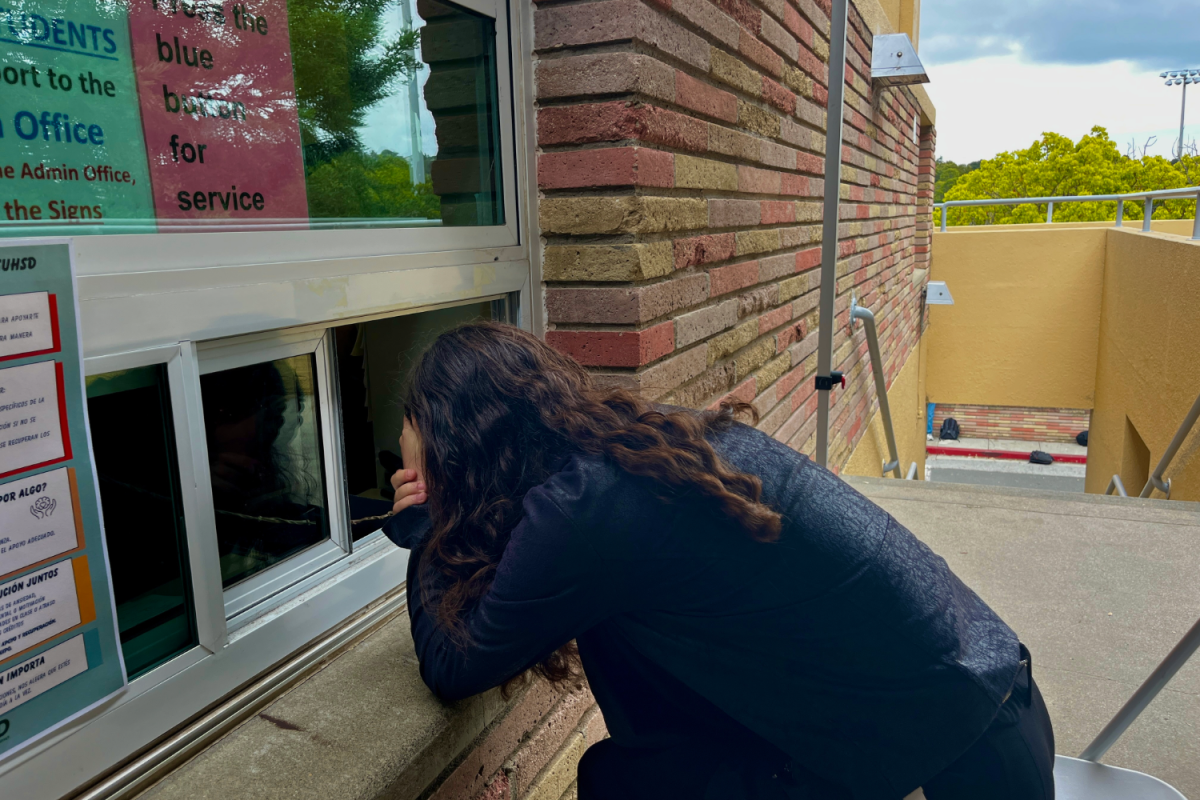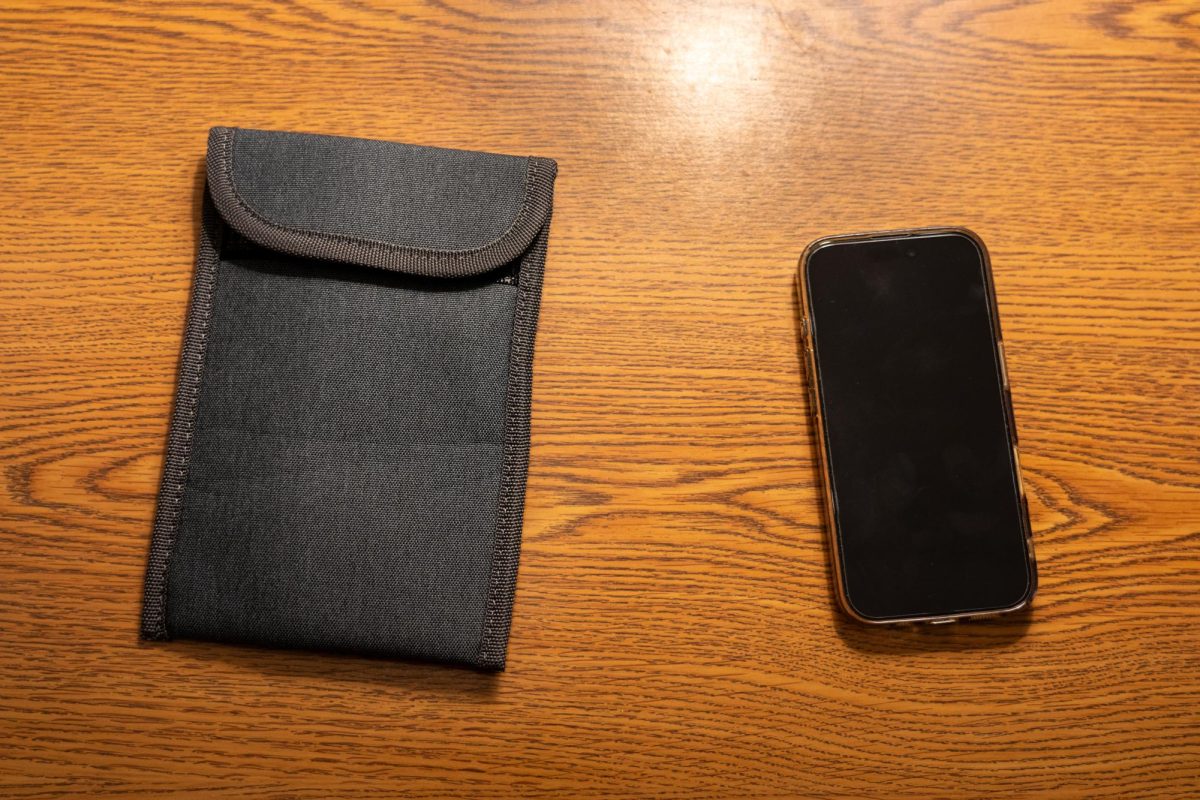On Tuesday, Jan. 9, the Tamalpais Union High School District (TUHSD) instated a district-wide cell phone policy, requiring students to relinquish their phones to a “storage unit” for the duration of instructional time. They cited an increase in phone use during class, and a general decrease in focus among the student population.
This increase in phone use is not just perceived, but also backed up by nation-wide data. According to a 2022 study from the Pew Research Center, 95 percent of teens own or have access to a cell phone, and 45 percent of them said they are online on an almost constant basis.
In the United States, children acquire their first personal cell phone at the average age of 11. With the majority of teens having had a cell phone since a young age, the question arises of how the constant presence of a screen affects high school students.
The new district phone policy, now implemented in Archie Williams High School, aims to omit the device as a source of distraction seen among the student population. Failure to follow the new policy results in confiscation of the student’s mobile device and the possibility of a phone call home and/or detention, depending on the student’s possible previous offenses.
In the past, Archie Williams teachers, such as Social Studies teacher Dan Freeman, have struggled to pry students’ attention away from their phones during instructional time. Freeman instated a phone policy in his classroom over ten years ago, before it became district regulation. He believes that the presence of phones in his classroom has affected both learning and personal connection.
“There were always a small handful of kids in my class who very literally could not stop [using their phones…],” Freeman said. “There were points… where I would be doing heavy teaching, and students would be doing things I couldn’t see.”
Freeman noticed the effects of cellphones in his classroom and how they impeded his teaching capabilities. When he began taking phones away from his students at the beginning of class, he saw an increase in his students’ engagement.
“When [phones] go away, I have a chance. I can get more kids, more engaged, more often,” Freeman said.
School cell phone bans and policies are also trending world-wide, according to the United Nations Educational, Scientific and Cultural Organization. In 2023, about one in four countries had restrictions on screen use in the classroom.
Archie Williams science teacher Michael “Doc” Wing began using a phone collection system in his classroom long before the new policy and looks forward to seeing it expand across the district.
“I realized that I could teach the class at a higher level, and do better things. [I could] do more things if nobody had [their phones],” Wing said.
According to Wing, most students were compliant with the introduction of his cell phone policy, and some were even relieved to be “off the grid” for the 90-minute period.
“There’s something addictive about phones that keeps you reaching for it. I know this is true for adults, too. You keep reaching for it; [it’s] the definition of addiction,” Wing said.
The overuse of cell phones, and specifically social media, can also contribute to the development of anxiety and depression in young adults. In a 2022 study from the National Institute of Health, individuals with higher cell phone use exhibited more symptoms of depression and other mood disorders, compared to those with lower cell phone use.
Wing, who began teaching in 1998, saw a change in his students with the introduction of the cell phone in the late 2000s, relating to the higher levels of mental health issues.
“In some ways, [students] have changed for the better, but there’s been one huge, major, glaring, humongous change that everybody has remarked on that coincides with cell phone use, which is anxiety and depression…” Wing said. “Teenage anxiety and depression is totally correlated with cell phone use, and it was not unheard of, but much more rare before cell phones became common.”
According to a study by Opal.so, the world’s most popular screen time management app, the science behind increased phone addiction occurs due to the brain “producing an abnormal amount of dopamine” when a cell phone is constantly picked up. Screentime has a specific effect on students, as their ability to focus is impaired when they feel the need to frequently pick up their device, and the habit becomes addictive.
Archie Williams junior Nolan Marsh sees a lot of his peers addicted to their phones, and notices it in himself, too.
“I try to limit my personal phone usage as much as I can. It can have problems long-term for emotional health,” Nolan said. “You can really see the effect on the people around you.”
Although the district intends for the new policy to foster productivity and prevent cell phone addiction, Nolan remains skeptical about how it will affect students in the long run.
“I have mixed opinions on [the policy] because it was instated to assist kids who are struggling with their phones in class, but it does not truly prepare kids for after high school,” Nolan said. “It creates an environment where they are guided by their teachers to put their phone away, which they will struggle with after high school because they will not have that figure of authority [telling them to].”
Many of Nolan’s classrooms already used phone collection caddies before the policy began, with other teachers sharing Wing and Freeman’s sentiments. Administration continues to enforce the new rules and hope that both students and teachers will benefit from them. The TUHSD community believes that students and adults alike will grow from the new policy, and hopes they will look closer at phones’ effects on those around them.
This story was originally published on The Pitch on March 20, 2024.


































